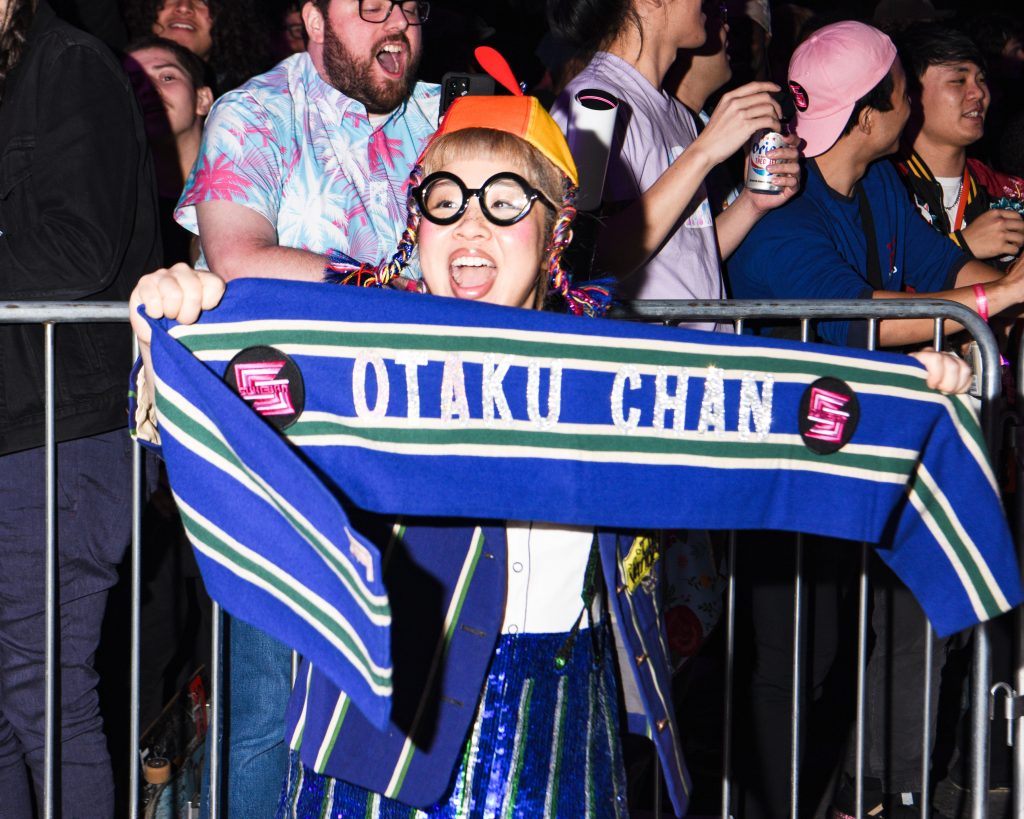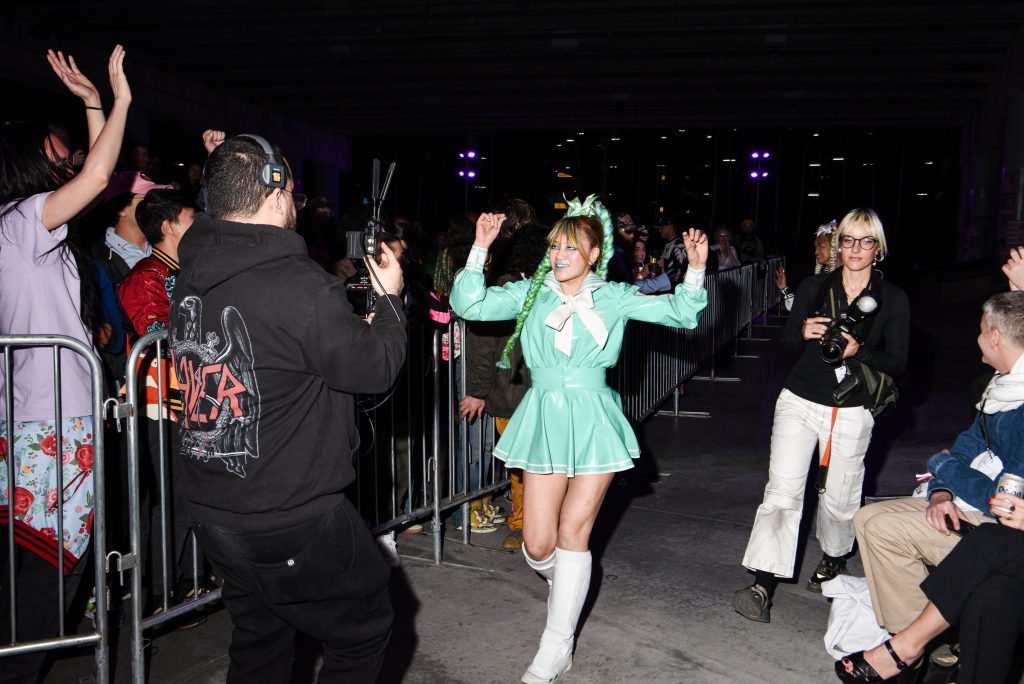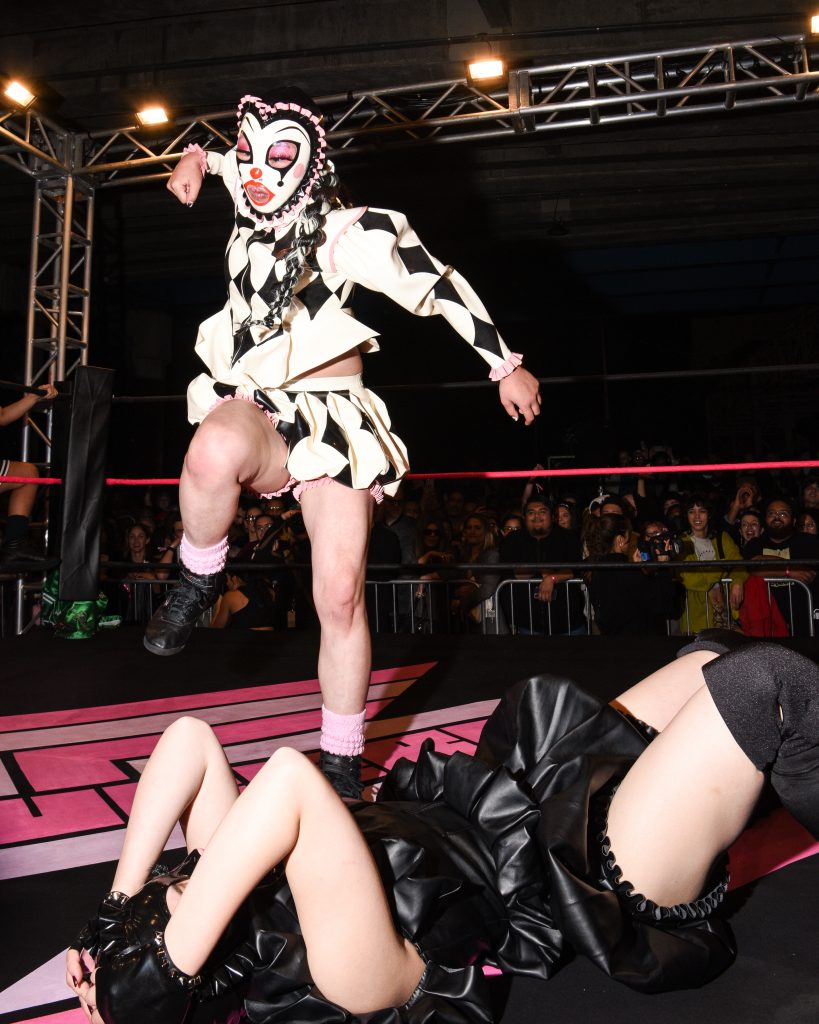Art World
Where Were You? A Japanese Women’s Wrestling Match Is the Surprise Hit of Miami
Sukeban, a new highly stylized league of joshi puroresu, took place under a freeway overpass—and delighted Miami fairgoers.

Sukeban, a new highly stylized league of joshi puroresu, took place under a freeway overpass—and delighted Miami fairgoers.

Janelle Zara

For 2023, the non-existent title of Miami Art Week Wildcard belongs to Wednesday night, when sometime after Janelle Monae hopped into the pool at the Edition, something like 2,000 people gathered under the Interstate 95 overpass in Downtown Miami to watch Japanese women in costume wrestle. A high point of the evening was watching a lady in a turquoise latex schoolgirl uniform land a dropkick—that is, both soles of the feet, launched from on top of the ropes—on her opponent’s chest. The crowd went absolutely wild.
This was Sukeban, a new highly stylized league of joshi puroresu, or Japanese professional women’s wrestling. Co-founded by entertainment executive Alex Detrick; professional wrestlers Orion Dove and Bull Nakano; and fashion designer Olympia Le-Tan, Sukeban launched in New York in September as a traveling show performed by professionals who otherwise live in Japan.

Otaku-Chan. Photo by Deonte Lee, BFA. Courtesy of Sukeban.
Orion Dove, also known as Ian Fried, “has been obsessed with this particular genre of Japanese wrestling for forever and sort of shared his passion with my brother in law [Alex Detrick],” Le-Tan told Artnet News. “They decided that they wanted to bring it to the U.S. and asked me to dress them.” After watching a few joshi puroresu videos, she took on the role of creative director, dramatizing the lighting, costumes, promotional photos and the merch with the goal of “opening it to a much wider audience.” She also commissioned few luxury flourishes perhaps underappreciated by a populist crowd, including cloisonné enamel champion belt designed by Marc Newson, and hats by Sir Stephen Jones, haute couture’s most-wanted milliner.
To my absolutely untrained eye, joshi puroresu is not unlike American WWE, a very specific art form where the sport of ritualized violence collides with the pageantry of drag. Imagine an opera distilled to its crudest form, where each player emotes the rough outline of a character in exaggerated conflict; where a Catwoman type in a latex luchador mask locks into strange choreography with a clownish mechanic with a red mullet.

Maya Yukihi. Photo by Deonte Lee, BFA. Courtesy of Sukeban.
There is no singing, no rising action nor resolution, only body slams, headlocks, and DDTs. Despite the high potential for kink, there’s thankfully no alienating erotic subtext; joshi puroresu was designed as inclusive femme entertainment.
“I’m with the goth bitches,” a young man behind me cheerfully told his girlfriends. Even if you’re unfamiliar with the league, you pick your victor based on aesthetic. Le-Tan styled the fighters into what she calls gangs—what you’d call a house in the context of drag, or a Jungian archetype in some schools of psychology. You’ve got high femmes in the Harajuku Stars wearing an array of monochrome latex schoolgirl uniforms, and your goth femmes in Dangerous Liaisons with Victorian, Vivienne Westwood-coded outfits. The butch queens are the Cherrybomb Girls with their oversized basketball shorts and bomber jackets, and The Vandals are a rag tag of weirdo misfits with the least cohesive costuming: there’s a harlequin and a gamer and a nerd with coke bottle glasses. Sukeban got its name for the Japanese word for “delinquent girl.” Is it camp? I don’t think so; they’re not dropkicking each other ironically. Is it good? That is in the eye of the beholder. The rapt, high-energy crowd under the purple-tinted lights was every kind of person: the young, the old, the fashion-oriented, the skateboarders.

Stray Cat, Bingo. Photo by Deonte Lee, BFA. Courtesy of Sukeban.
Art Basel Europeans in Black Suits had a particularly hard time committing to the show—this is an art form that demands no intellectual effort from its audience and offers none in return. But for the rest of us, the vibe was not art fair but state fair, where we bought cans of beer at little carnival booths and drank them in the parking lot. I thought of Hermann Nitsch, who served white wine spritzers during his “abject” performances because he knew his audience needed to loosen up. I also thought of Paul Pfeiffer, whose work captures the absurd collective rituals of spectatorship.
As we got buzzed on a few beers and melted into the collective hysteria of a few thousand other people, while a Harajuku Star was piledriving a Vandal to the floor, I could not imagine a more special kind of joy.
More Trending Stories:
Inspector Schachter Uncovers Allegations Regarding the Latest Art World Scandal—And It’s a Doozy
Archaeologists Call Foul on the Purported Discovery of a 27,000-Year-Old Pyramid
A Polish Grandma Found a Rare Prehistoric Artifact—And Kept It Quiet for 50 Years
Art Critic Jerry Saltz Gets Into an Online Skirmish With A.I. Superstar Refik Anadol
Your Go-To Guide to All the Fairs You Can’t Miss During Miami Art Week 2023
The Old Masters of Comedy: See the Hidden Jokes in 5 Dutch Artworks
David Hockney Lights Up London’s Battersea Power Station With Animated Christmas Trees